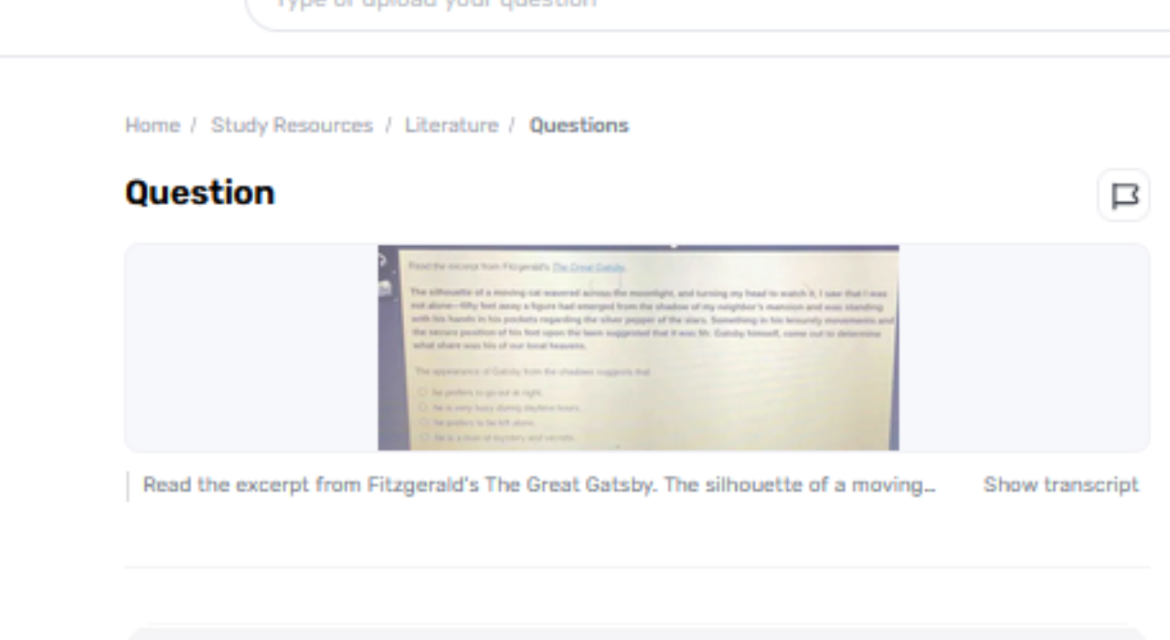In F. Scott Fitzgerald’s The Awesome Gatsby, the enigmatic character of Jay Gatsby frequently develops from the shadows, both truly and metaphorically. These minutes of appearance offer significant experiences into his character and the broader topics of the novel.
Gatsby’s shadowy passages serve as a powerful story gadget that uncovers much about his identity, inspirations, and the social setting in which he works. By analyzing these minutes, the appearance of gatsby from the shadows suggests that perusers pick up a more profound understanding of Gatsby’s complex character and the topical components that drive the story.
The Puzzling Nature of Gatsby
Gatsby’s development from the shadows frequently emphasizes his puzzling and slippery nature. From the exceptional start of the novel, Gatsby is covered in mystery. His terrific parties and luxurious way of life are well-known, however, the man himself remains a puzzler.
The strict shadows in which he some of the time shows up symbolize this secret. For occasion, his appearance at his possess parties is regularly characterized by a nearly spooky nearness. He is seen from a separate, or his nearness is proposed instead of specifically appearing. This riddle is further compounded by Gatsby’s background. His riches and social standing are the subject of many hypotheses, but few know the truth about his rise to riches.
Gatsby Hidden Motivations
Gatsby’s appearances from the shadows moreover give knowledge into his covered-up motivations. One of the key viewpoints of Gatsby’s character is his tenacious interest in an idealized past, especially his want to revive his sentiment with Daisy Buchanan. This interest is full of equivocalness and figment. Gatsbys shadowy passages frequently coincide with moments when he is profoundly locked in in this interest, reflecting the basic complexity of his inspirations. It also recommends the degree to which Gatsby’s dreams are segregated from the substantial world, emphasizing the appalling nature of his quest.
The Symbolism of the Shadow
The symbolism of shadows in Gatsby’s appearances is rich and multifaceted. Shadows speak to the covered-up angles of Gatsby’s life and the broader topics of the novel, such as the American Dream and social lessons. Gatsby’s wealth and victory are frequently portrayed in a way that casts long shadows over his character. Furthermore, shadows within the novel symbolize the ethical and moral ambiguities that encompass Gatsby. His rise to riches is corrupted by questions of legitimateness and judgment. The shadowy angles of his character reflect these instabilities. Gatsby’s shadowy nearness during basic minutes of the account emphasizes the differentiate between his open persona and the darker realities of his life.
Thematic Implications
Gatsby’s emergence from the shadows also underscores several key themes within The Extraordinary Gatsby. One of the central themes is the dream versus reality. Gatsby’s appearances from the shadows highlight the difference between his idealized vision of life and the cruel substances he faces. Another vital subject is the critique of the American Dream. Gatsby’s shadowy appearances reflect the frustration that goes with the interest of this perfect. Whereas Gatsby accomplishes fabric victory, he remains on a very basic level disappointed and confined.
Gatsby’s Relationship with Others
Gatsbys interactions with other characters are moreover lit up by his appearances from the shadows. His connections with Daisy Buchanan, Tom Buchanan, and Scratch Carraway are impacted by the slippery nature of his character. For occasion, his shadowy nearness amid intuition with Daisy underscores the passionate separation and complexity of their relationship. Essentially, Gatsby’s interactions with Tom Buchanan are stamped by pressure and struggle. Gatsby’s shadowy appearances amid these experiences highlight the fundamental hostility between them.
The Impact on the Reader
Gatsby’s emergence from the shadows has a noteworthy effect on the reader’s discernment of him. The utilization of shadows as a story gadget creates an atmosphere of riddle and anticipation, locks in perusers, and empowers them to dig more profound into Gatsby’s character. Besides, the shadowy angles of Gatsbys appearances contribute to the novels overall temperament and climate. The sense of haziness and equivocalness upgrades the novel’s investigation of topics such as frustration, ethical rot, and the failure of the American Dream.
A Beginner Guide to Utilizing Gauth for Queries
Taking these steps will assist you in successfully utilizing Gauth to address and solve your questions, making complex points more available and comprehensible.
Input Your Query
Begin by entering your inquiry into the Gauth stage. This may be an address related to arithmetic, science, innovation, or engineering. Be as specific as conceivable to induce the foremost precise and pertinent arrangement.
Get Detailed Solutions
Gauth will analyze your inquiry using progressed calculations and give a step-by-step arrangement. Each step will be clearly explained, breaking down complex concepts and calculations into sensible parts to guarantee you get the method.
Review and Learn
Examine the detailed clarifications given by Gauth. Utilize these experiences to get a handle on the fundamental standards and confirm the solution. Apply the information picked up to comparable queries to upgrade your problem-solving aptitudes and extend your understanding of the subject.

Conclusion
Jay Gatsby’s emergence from the shadows in F. Scott Fitzgerald’s The Awesome Gatsby offers significant insights into his character, inspirations, and the topical components of the novel. The shadowy appearances highlight Gatsbys mysterious nature, covered-up inspirations, and the typical representation of the American Dream’s frustration.
